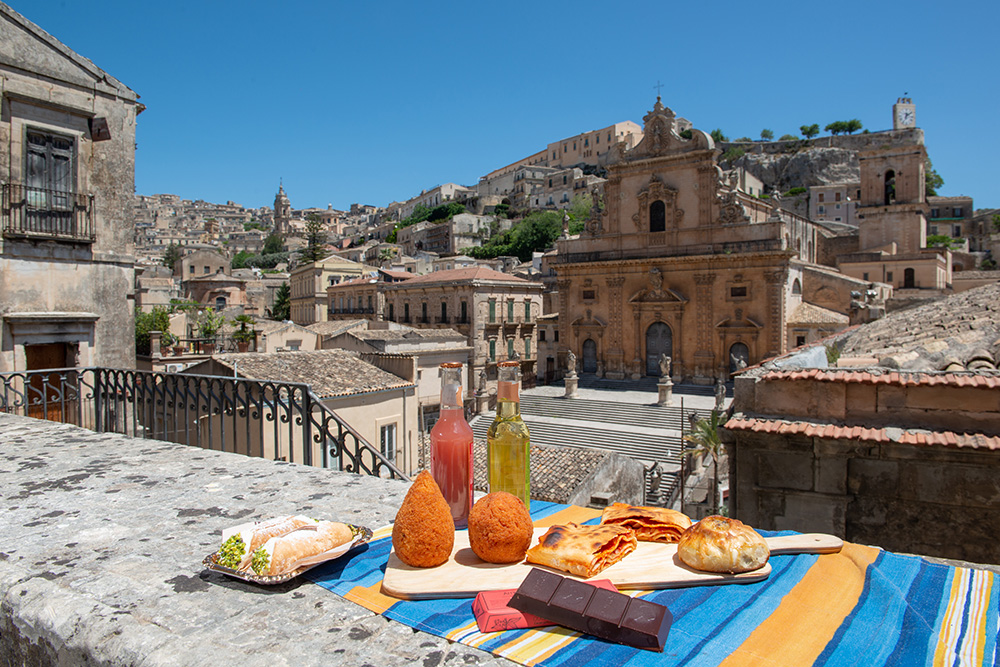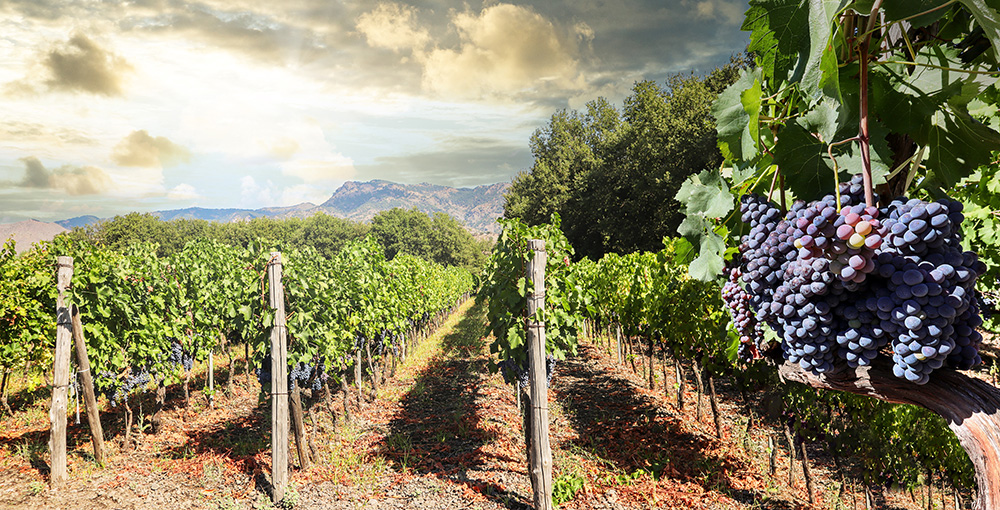Sicilian cuisine is a vibrant mix of flavors and influences, from Greek simplicity to French refinement, from Arabian desserts to Jewish offal dishes.
Sicilian cuisine is one the most varied and inspired in all of Italy, a veritable alchemy of scents, tastes and colours that demonstrates the influences of the people and civilizations that have passed through here and of the different effect they have had on various parts of the island. From the simple eating habits of the Ancient Greeks whose legacy remains on the eastern part of the island, to the refined cooking of the great French chefs, the “Monsù,” which delighted the Palermitan aristocracy in the seventeenth century; from the triumph of colors and scents of Arabian desserts to the offal prepared in the Jewish style, all have contributed a touch of exoticism to the island’s cuisine. On the eastern part of the island, simple dishes in the peasant and fisherman traditions prevail. The western part is notable for the Arab influence at play and for the aristocratic tradition which lends the cuisine a richer, more sophisticated palate full of unusual contrasts.
The Pasta
Sicily, the bread basket of Rome, was the first great pasta laboratory, where experimentation in form and new recipes led to what is today considered the basis of Mediterranean cuisine. Pasta, combined with vegetables and beans, gives life to tasty soups; fish is often added to greens and vegetables to create the seafood specialties that are the island’s pride; and meat is used as the base for the unique “peasant” dishes. In Sicily, the dish par excellence is pasta al forno (baked pasta), which can be found in different incarnations, with variation in the ingredients used, in every corner of the island.
The Arab influence can be detected in the strong contrasts in flavours, in particular the agrodolce or sweet and sour sauce, the use of raisins and pine nuts in pasta dishes, in the fish and vegetable dishes and in the use of almonds to flavour greens. Examples of typical Western Sicilian dishes are pasta con le sarde (pasta with sardines), whose main ingredients are fresh-caught sardines, fennel seeds, pine nuts, raisins, almonds and saffron; sarde a beccafico sardines with breadcrumbs, lemon, pine nuts, raisins and bay leaves; and involtini di carne (meat rolls) stuffed with breadcrumbs, pine nuts and cheese and flavoured with bay leaves and onions.
Caponata, fish and cous cous
Another typical Sicilian dish, caponata, is of Catalan origin. It is a mixture of fried vegetables (usually eggplant), with tomato sauce, celery, onion, olives, capers and almonds in a sweet and sour sauce. In the interior of the island, the cuisine is dominated by meat, pulses, sausages and excellent cheeses, while on the coast, fish is the order of the day. Seafood is richly prepared in countless ways.
Tuna holds a special place in traditional cuisine, as do sardines and anchovies, and in Messina, swordfish is king. One special preparation is pesce spada alla ghiotta with onions, olives, capers and tomatoes. Cous cous is made of durum wheat granules and is steamed in the typical Trapanese style. It is the principle dish in the gastronomic tradition of the Mediterranean south, but unlike other countries of the Maghreb region where it is usually served with meat, in Sicily it is served with fish.

Street food
Street food plays a very important part in Sicilian cuisine. This tradition includes a great quantity of inexpensive items that can be bought at street stalls or friggitorie and eaten as a quick snack such as bread and panelle (chickpea flour fritters), cazzilli (potato and parsley croquettes), sfincione (typical Palermitan pizza with breadcrumbs, onions and sheep’s milk cheese), or batter-fried vegetables (cauliflower, artichokes, cardoons). Palermo comes in fifth place for the best street food among world food capitals, according to the World’s Top 10 Cities For Street Food, published by Forbes. The top four cities are Bangkok, Singapore, Penang and Marrakesh. The most common snack, perhaps of Arab origin, is certainly arancina di riso (arancino in eastern Sicily): a rice ball filled with either meat and peas or mozzarella cheese and ham. The name is derived from the shape and colour of the balls, which look like oranges.
Desserts
The Greeks gave Sicily their love for ricotta, the dairy product that would go on to inspire the great Arab pastry masters and eventually all of our now-celebrated ricotta-based desserts: cassata and cannoli are among the popular pastries based on ricotta cheese mixed with chocolate, cinnamon, candied fruit or liqueur. In the Norman era, pastry making was taken from the hands of the Moors and passed on to cloistered nuns who created veritable centres of experimentation within their monastery walls.
These religious artisans are responsible for creating, among other specialties, Frutta di Martorana, which is named after the monastery where it was invented. Finally, one cannot fail to mention the ice creams and granitas, an indispensable ritual for Sicilians during hot summer days. Using almond paste, the nuns made small confections in the vibrant colours and shape of every kind of fruit to celebrate of the Feast of the Dead. We must not forget to mention gelato (ice cream) and granita (crushed ice drinks), as they are so important to Sicilians during long, hot summer days.

Wines
The Phoenicians introduced wine to the Mediterranean, but it seems like grapevines have been growing spontaneously here on this sun-kissed island since long before their arrival. It was, in fact, Greek colonists in the 8th century B.C. who introduced viticulture, thereby initiating the production of Sicilian wines that by Roman times were already being exported at high prices.
While in the past Sicilian wine had a high alcohol content and was generally mixed with other wines, since 1970 producers have been creating wine of a higher quality. Today, the island’s native grapes are among the most important in Italy and have gained international renown on a par with those of other noted Italian wine regions such as Piedmont and Tuscany. While Nero d’Avola is certainly the most prestigious native Sicilian variety, other celebrated local grapes include Grillo, Cataratto, Cerasuolo di Vittoria, Inzolia, Moscato d’Alessandria, Zibibbo and Malvasia. The principle international grapes grown are Chardonnay, Cabernet Sauvignon, Merlot, Müller Thurgau, Pinot Nero and Syrah. Sicily is also famous for the production of dessert wines and liqueurs which are among the most celebrated and expensive in Italy. They include Marsala, the most famous Sicilian wine, the aromatic Malvasia from Lipari, Moscato from Noto and Syracuse, and Passito from Pantelleria.